Space Station Construction Rules
Wheel in the sky keeps on turnin'...
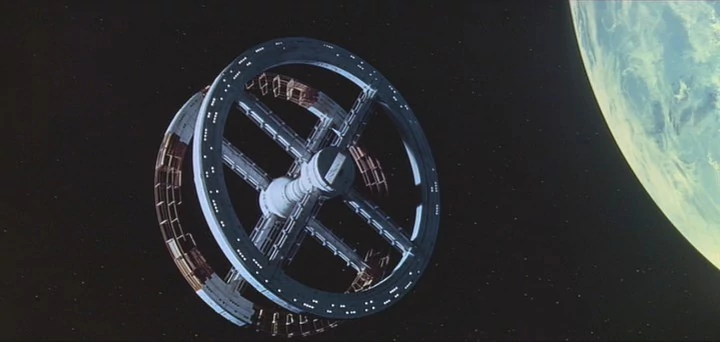
Space Station Construction Guidelines
HULLS
Space Stations hulls are ring-shaped with a central hub for docking with elevator/spokes attaching the two structures. The various hull sizes are rated in size from I to VI (Roman numerals are utilized to prevent confusion between station and ship hull sizes), with each size appropriating different specifications as per the table below:
| Size | Hub/Ring diamters | # of Mooring Bays | Max. Ship hull sizes per bay | Maximum Population | Rotational Time for 1 G |
| I | 50/200 | 4 | 6 | 1000 | 20.1 sec |
| II | 75/400 | 6 | 10 | 2000 | 28.4 sec |
| III | 100/600 | 8 | 14 | 3000 | 34.8 sec |
| IV | 150/800 | 12 | 18 | 5000 | 40.1 sec |
| V | 200/1000 | 15 | any | 7500 | 44.7 sec |
| VI | 250/1200 | 20 | any | 10,000 | 49.1 sec |
CALCULATING DCR & HULL POINTS
DCR = HS x 25
HP = HS x 50
Note these figures are for civilian stations, Fortified Stations and Fortresses follow different formulas due to their higher degree of armor and defense ratings:
FS DCR = HS x 35
FS HP = HS x 75
F DCR = HS x 50
F HP = HS x 100
Note that mulitple linked stations (such as 2-8 linked stations in a Starship Construction Center) will have 50% additional hull points per additional linked section, i.e. a double linked size:II station would have 150 points versus a single size:II station's normal 100 points, while a triple linked size II station would have 200 points. In the event the hub is extended (to permit additional ship docking) it would have 25% more hull points per hub extension, i.e. a triple hub size:III station would have 225 hull points versus a standard size:III station's 150 points. DCR is similarly modified for linked stations (but not for extended hubs).
HULL CONSTRUCTION COSTS
Unlike star ships, space station construction costs are the same because they all require the materials to be transported to the site rather than having dedicated construction centers orbitting certain worlds. The cost of the hull is simply the materials alone, not taking into account the various operating systems, life support, communication & detection equipment, etc.
Space Station HS x 1,000,000 credits
Fortified Station HS x 2,000,000 credits
Fortress HS X 3,000,000 credits
it should be noted that when constructing a station that one level 6 engineer will be needed for each station size, hence a HS:IV station will require four level 6 engineers.
LIFE SUPPORT
Unlike space ships, a station requires a greater degree of life support equipment. The computer program level coincides with the station's hull size, ergo a size II station would require a level 2 program while a size V station would require a level 5 program. The equipment cost is 100,000 credits per station size. Back-up systems and programs cost the same as the main equipment.
STATION COMPUTERS
Just like a personal computer or a ship's computer, a space station computer can utilize a wealth of the programs listed in both rule books. Unless otherwise noted, the computer program level must coincide with the station's hull size. The following computer programs are mandatory for any space station:
Alarm: Despite not having any drives, this program is still required to monitor any and all systems within the station.
Analysis: Required to perform calculations & computations, this program is utilized by the station's various detection systems as well. All stations must have at least a level 3 Analysis program.
Commerce: Necessary to track any and all business transactions conducted aboard the station.
Communication: Utilized for all forms of communication, be it internal station communication, Frontier News Network and other multi-media broadcasts, internet/ethernet, and the likes.
Damage Control: Required to coordinate the crew & computer's combined efforts at repairing any damage suffered by the structure.
Industry: This program is vital to operating the various machine shops and hydroponics in the station and must be at least level 1, with higher level programs utilized for more industrial applications depending on the station's intended design (i.e. an Agricultural Station would need one level per hull size, a construction center would need a level 6 program regardless of size, etc).
Life Support: Required to monitor/control the various levels of breathable atmosphere along with heating & cooling, food & water, waste manangement, and lighting.
Maintenance: Handles routine maintenance patterns, repair, and janitorial service...this program is often utiized alongside the Damage Control program.
Transportation: Utilized for traffic control, specifically for the elevators running between the hub and ring. A level 1 program is more than adequate for this, however some stations incorporating conveyor walkays and internal monorail systems within their residential & commercial centers may incorporate a higher level program.
Note that these are sugested for the station's central computer, other computer terminals within the station may require additional programs (such as a cargo loader station in the hub would require a cargo arm program). Other programs such as Installation Security, Law Enforcement, Robot Management, and the like are optional (although they are more common on Foritifed Stations & Fortresses).
COMMUNICATION & DETECTION EQUIPMENT
All of the basic ship equipment listed in the KH Campaign Book can be applicable to space stations.
However, there are a few noteworthy additions. For starters, the Camera System price would be multiplied by the station size. Skin Sensors would cost 10,000Cr x station hull size. Radar and Energy Sensors with extended ranges can be purchased for space stations, a double ranged system could be utilized in a HS:II station at twice the cost, or a sextuple ranged detector can be utilized on a HS:VI station at six times the cost. An intercom network will cost 500 credits per station size, this reflects panels in the key administrative & operational areas along with receiver/microphones in all the public areas.
ARMING SPACE STATIONS
A standard space station can be upgunned at a rate of 40 cubic meters per station size worth of weapons and defenses with no penalties. Fortified Stations may do so at the rate of 60 cubic meters per station size. A Fortress may accomodate up to 50 cubic meters per size worth of weaponry and 100 cubic meters per size worth of defenses. It should be noted that the cost of defensive screens (electron, proton, and stasis) are 20 times the ship allocations, hence a stasis screen would cost 60,000Cr per station size and chew up 200 cubic meters per size of space.
Any allotment exceeding that amount will cause the station to lose a coinciding amount of population and ship docking space, hence if the weapons & defenses go 10% over it will cost 10% of the population and docking space.
Linked stations can double this capacity, however it can only be doubled regardless of how many stations are linked. In other words, whether there are two linked stations or eight the structure can only accomodate double the capacity. This reflects how the weapons & defenses are mounted on the hub faces.
STORAGE
The amount of storage depends on the hub's docking facilities, each station can accomodate (# of docking bays times max hull size of ship) worth of cargo units. In the case of size V & VI stations, "any" would be considered as HS:20 for the multiplier.
DECK PLANS
Obviously this would be a huge endeavor to undertake, but we can take the basics from the published Space Station portion of the KH fold-out map. The other portion of the ring would be the commercial deck(s) where all the businesses & shops are arranged, picture it as a huge shopping mall in a never ending yet repeating line. "Below" the commercial decks (further into the ring) would be the residential deck(s). The innermost (closest to the elevator spokes) portion of the ring contains the administrative deck(s).
Obviously this would be tailored for different station types, i.e. a Fortress would not have any commercial decks and more administrative decks instead.
SKILLS
While there is no need for a pilot or astrogator aboard a space station, there are still several other key positions that need to be filled. A Station Administrator is first and foremost, this is the person in charge. This person would be the most knowledgeable of the type of station (i.e. a business savvy person would be in charge of a commercial station, a highly skilled technician or engineer would be entrusted to run an industrial station, and a high ranking miitary officer would oversee a fortified station or fortress). This person would also have a number of assistants (vice presidents, sub-chiefs, Executive Officers, etc) numbering one per station size. A chief engineer would be required (level 6) with a number of assistants also totalling the station size (any level for the assistants but typically at least one level per station size). A team of technicians would also serve under the engineers. If the station is armed there will be two gunners per gunnery position (working ten hour shifts and never straying far from their designated area while on duty). There are numerous other positions that can be utilized including a business manager, housing manager, security/police, laborers, and anything else suitable for the station in question.
POPULATION QUARTERS
Figure 40% of the occupants will have single cabins, 40% more will have double occupancy cabins, and the remainders will have luxury or family sized accomdoadtions. Standard costs apply for the single and double while the family and luxury would be first class accomodations as per the KH rules.
SPACESUITS & VEHICLES
While there shouldn't be an unlimited number of resources, figure one spacesuit per ten population are stowed in a station (i.e. 100 suits for a size:I station with a 1000 population). Most of the inhabitants will remain on the station, very few are required to venture into the vacuum of space.
There should also be a similar allotment of launches kept in the docking bay, figure one large launch per 100 occupants (while substituting a two small launches for one large launch on occassion).
There will be a minimum of two workpods per station size for the engeineering & maintenance crews to utilize. There will also be two lifeboats and ten escape pods per 50 population, all scattered across the various decks of the ring.
SPECIALTY RULES
Perhaps the GM might opt for a "double ring" station, i.e. a size:III station with two rings branching off of a single hub. Or perhaps a station with a single ring but the hub extends out each way for a triple capacity of ship bays. Common sense prevails here, for example the double ring might cost twice as much and use twice as many cabins and life support for the occupants or the triple wide hub/single ring would also cost twice as much but utilize the standard allotment of cabins and life support. If your design includes burrowing into an asteroid, perhaps factor half the cost in construction. Simply follow the guidelines above accordingly and you won't go wrong.
As far as ship-to-hub docking procedures are concerned, there are grappling towers at each corner of the massive bay entry that will launch grapples once an approaching ship has matched rotation. The grapples will reel the craft into the bay with a coordinated effort as the pilot relinquishes remote operation via the control tower. Once the ship is near its mooring bay, the grapples are released so the ship's maneuvering thrusters set the vessel down where it can be secured. Take-offs are handled in a similar manner: the ship's docking couplings are released, it maneuvers out of the mooring bay where the grappling towers can reel it out, and it is guided out of the docking bay via the control tower. In the early days of the Frontier there were no grappling towers but as enforced safety became an issue these were incorporated.
SUMMARY: STATION DESIGN SEQUENCE
1> Determine what planet the station will be orbitting. Once you begin construction you're committed!
2> Hire the engineering team entrusted withthe construction.
3> Buy the hull and determine the base hull points & DCR.
4> Purchase the required cabins and life support equipment.
5> Factor in any optional equipment for the station based on its purpose (weapons, scientific/research equipment, mining equipment, etc).
6> Purchase & equip the central computer with all necessary programs.
7> Factor in escape vehicles, launches, workpods, & space suits.
8> Equip the station with its respective communication & detection gear.
9> Enjoy your new customized one-off space station!
Space Station Examples
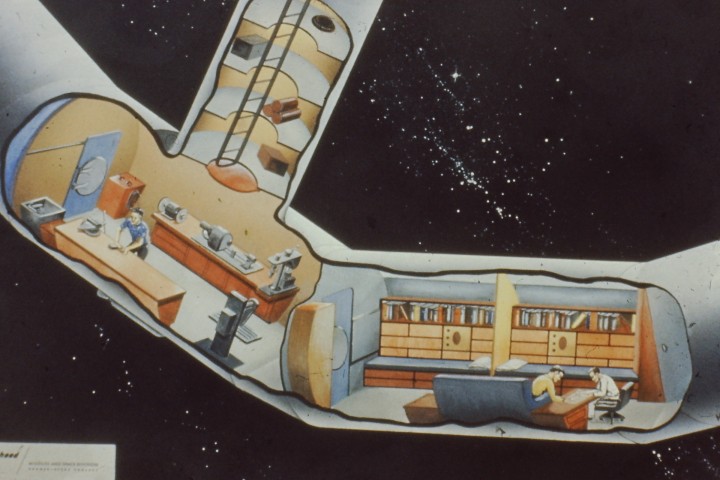
Boneyard Station
Location: Evergleem/Triad/Cassidine
Owner: Shat Rat's Salvage
HS: III (triple extended hub)HP: 225
Mooring Bays: 24 (HS:14 max)
Population: 3000max, 1200 regulars
ADF: 0 MR: 0 DCR: 75
Weapons: none
Defenses: RH, MS(x2), ICM(x6)
Computer
Alarm(3), Analysis(3), Commerce(3), Communication(3), Computer Lockout(5), Computer Security(6), Damage Control(3), Industry(5), Installation Security(3), Interceptor Missile(3), Life Support(3, capacity:3K, two programs), Maintenance(3), Transportation(1)
Communication: SubSpace Radio, VideoCom, Intercom network
Detection: Radar (3X range), camera system
Misc. Equipment: Backup Life Support Equipment, 500x100meter external cargo net (scrap yard)
Storage: 336 units (mostly salvage parts)
Quarters: 1400 single cabins, 600 double cabins, 200 luxury cabins
Vehicles: 15 launches, 6 small launches, 12 cargo launches, 12 workpods
Emergency Vehicles: 120 lifeboats, 600 escape pods
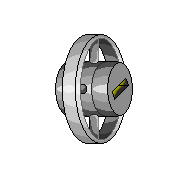
Vruskan entrepreneur Sha-T'rtl (nick named "Shat Rat") founded the Frontier's premier and largest space ship salvage yard after having collected a large cache of used parts and hulls. Having run out of viable space to store all of his goods, he constructed Boneyard Station orbitting Triad's moon Evergleem and his business has been booming ever since. The station only has a single entry/exit bay as the opposites side of the triple hub has a large cargo net where all the scrap metal and other non-viable bits can be stored (for use as hull plate patching and fabrication purposes).
The aft third of the hub which said net is attached houses a variety of salvaged hulls that have been collected over the years, and the bay doors are typically closed unless any large pieces of scrap need to be moved into the hub. Several launch "airlocks" are adjacent to the bay doors for access to the scrap heap.
The middle third of the hub is reserved for customer salvage/construction, patrons may lease berthing space while they work on their resurrection projects. Various hulls can be found berthed here, either hulls purchased from the Comapny or privately owned/claimed wrecks that simply need major work.
The forward third of the hub (adjacent to the entry/exit bay doors) is for docking purposes, ships requiring repairs and Shat Rat's fleet alike can berth safely in this section. If your ship is able to move under its own power, it gets berthed in the forward section...anything else gets ferried to the mid-section.
Shat Rat maintains a small fleet of freight haulers that scour the Frontier for salvageable goods, mostly HS:5-6 freighters and his HS:18 freighter flagship. The flagship is too large to be berthed inside so when it arrives it will typically park near the station's bay doors while cargo is offloaded and will typically take a berth at neighboring Triad Station until needed again.
Shat Rat's Salvage has been a very lucrative business, and the proprietor is typically quite eager to meet with and advise any potential customers. His motto is "Good business is where you find it, and I am always looking."
Clarion Station
Location: Clarion, White Light
Owner: Clarion Government
HS: V (double-linked) Commerce StationHP: 375
Mooring Bays: 30 (HS:20 max)
Population: 10000max
ADF: 0 MR: 0 DCR: 188
Weapons: none
Defenses: none
Computer
Alarm(5), Analysis(3), Commerce(6), Communication(5), Computer Lockout(4), Computer Security(6), Damage Control(5), Industry(3), Installation Security(5), Law Enforcement(4), Life Support(5, capacity:5K, 2 programs), Maintenance(5), Robot Management(4), Transportation(1)
Communication: SubSpace Radio, VideoCom, Intercom network
Detection: Radar (5X range), Camera System
Misc. Equipment:
Storage: 600 units
Quarters: 4000 single cabins, 2000 double cabins, 1000 luxury cabins
Vehicles: 80 launches, 20 small launches, 10 cargo launches, 20 workpods
Emergency Vehicles: 400 lifeboats, 2000 escape pods
Wheeling majestically over the surface of Gollywog is Clarion Station, pride of the Royal Government. All of the megacorporations have offices aboard this station and it is a popular hang-out for indepenent freight haulers and their crews as well. As such all types of trade can be found within the docking bay and ring alike.
Clarion Station is also home port for the Clarion Royal Marines militia fleet. Those crews and the hundreds of support staff call the administrative decks their home, although while off duty they can be found on the commercial, entretainment, and residential decks as well.
While it is not the largest commercial station in the Frontier, it is certainly the most elegant in design. A significant amount of decorative engineering surrounds the hub along with occasional outcroppings along the spokes and double-rings.
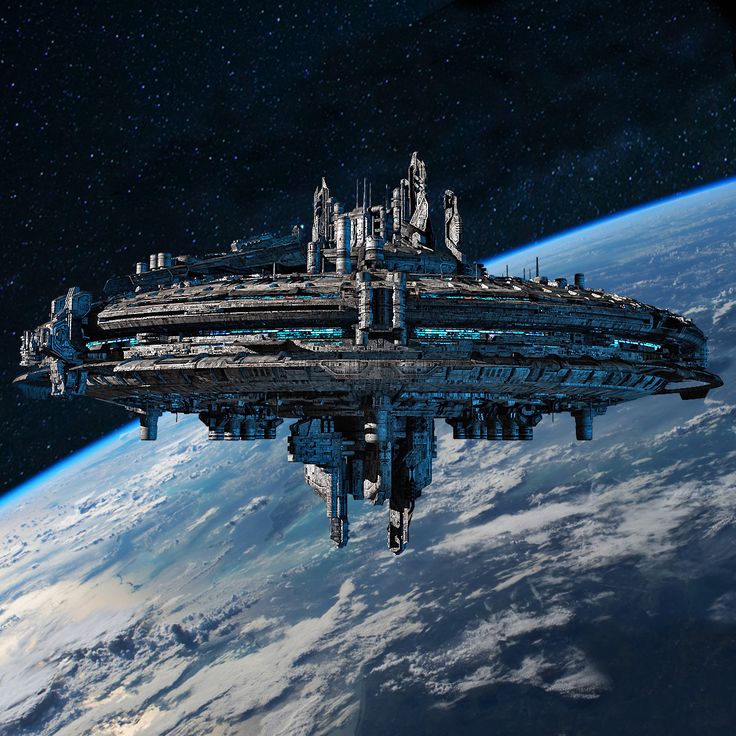
Daedalus Shipyards
Location: Minotaur, Theseus
Owner: PanGalactic & Trans Travel
HS: VI-triple Spaceship Construction Center (Class II)HP: 600
Mooring Bays: 60 (HS:20 max)
Population: 18000 maximum
ADF: 0 MR: 0 DCR: 300
Weapons: none
Defenses: RH, MS(x3), ICM(x12)
Computer
Alarm(6), Analysis(6), Bureaucracy(3), Commerce(6), Communication(6), Computer Lockout(4), Computer Security(4), Damage Control(6), Industry(6), Information Storage(3), Installation Security(4), Interceptor Missile(3), Life Support(4, capacity:18K), Maintenance(6), Robot Management(6), Transportation(1)
Communication: SubSpace Radio, VideoCom, Intercom network
Detection: Radar (6X range), Camera System
Misc. Equipment:
Storage: 1200 units, mostly parts & materials storage
Quarters: 7200 single cabins, 3600 double cabins, 1200 luxury cabins
Vehicles: 100 launches, 50 cargo launches, 60 small launches, 240 workpods
Emergency Vehicles: 720 lifeboats, 3600 escape pods
The Theseus system stands on the precipice of being the most industrial system in the Frontier. They have the most formidable planetary militia (worthy of being listed as a detachment of Spacefleet) posted at a Fortified Space Station, they have a bustling tourist industry in their capital city Maze (which is also home to Starplay Enterprises), readily available hydrogen fuel processing via the gas giant Ares, and they have a construction center capable of producing any size & type of starship. Daedalus is unique in the way that it's trio of habitable rings is smaller in diameter as you go stem to stern, this allows variances in gravity as the smaller rings have lower gravity thus enabling the production and movement of heavier items for the shipyard. An armored shroud tapers to the egress point of the main hub, ending at the commercial ring where most of the offices and residences are located. The center ring is predominantly administration and smaller production while the smallest ring houses the big construction projects (mostly drives and raw steel for bulkheads & hull plating).
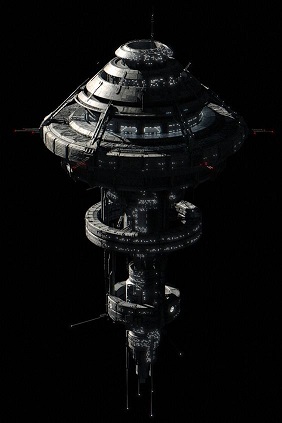
Darkworld Station
Location: Outer Reach, Dramune
Owner: currently under transition (formerly MalCo Enterprises)
HS: III (custom hull)HP: 150
Mooring Bays: 8 (HS:14 max)
Population: 3000max
ADF: 0 MR: 0 DCR: 75
Weapons: LB, RB(x6)
Defenses: RH, MS(x2), ICM(x6)
Computer
Alarm(3), Analysis(3), Commerce(3), Communication(3), Computer Lockout(4), Computer Security(6), Damage Control(3), Industry(4), Installation Security(3), Interceptor Missile(3), Laboratory(3), Laser Battery(1), Life Support(3, capacity:3K), Maintenance(3), Robot Management(6), Rocket Battery(2), Transportation(1)
Communication: SubSpace Radio, VideoCom, Intercom network
Detection: Radar (3X range), Energy Sensor (3X range), Camera System
Misc. Equipment: Pharmaceutical Laboratory
Storage: 112 units
Quarters: 1200 single cabins, 600 double cabins, 300 luxury cabins
Vehicles: 24 launches, 12 small launches, 6 workpods
Emergency Vehicles: 120 lifeboats, 600 escape pods
Darkworld Station barely survived the Third Dramune Civil War and is currently under transitional ownership via the government of Outer Reach (with close supervision and interaction from the Inner Reach government). It is unique in the fact that the hub does not rotate with the upper portion of the station, thus remaining in a constant zero-grav environment.
The upper portion rotates independently of the hub connected by a series of airlocks in the station-to-hub "axle" and typically rotates at a speed sufficient enough to generate between 0.5 and 0.6G, although this drops significantly closer to the center as the upper portion is only marginally wider than the hub.
The hub itself has a single acess point, the bay doors are located at the "bottom" and the docking bay comprises roughly 2/3 of the total area. The upper third is a large pharmaceutical lab and production facility, although this is likely to be refurbished for other purposes considering what orignally transpired in this area under MalCo's ownership. The station's weapon systems are also unique, being mounted on tracks that encircle the hub so that either battery can acquire targets approaching from any angle relative to the station. Likewise, the interceptor missile launcher is also mounted on a third track system to defend the station accordingly.
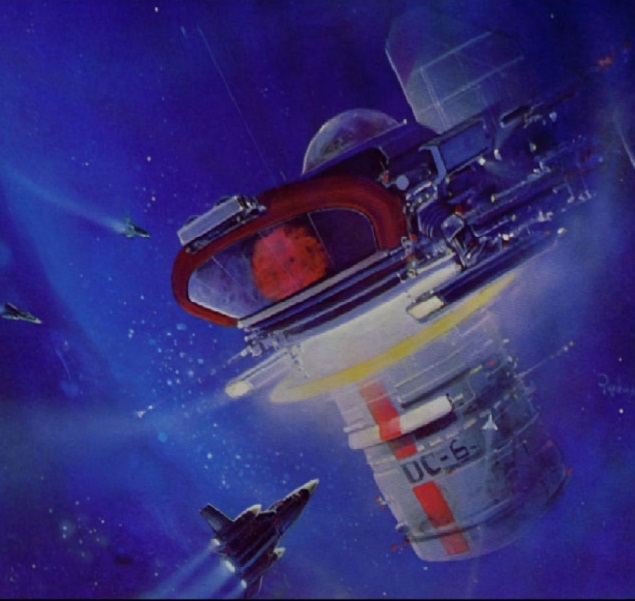
Fortress Gollwin
Location: Morgaine's World, Prenglar
Owner: UPF
HS: VI fortressHP: 600
Mooring Bays: 20 (HS:20 max)
Population: 6000 max
ADF: 0 MR: 0 DCR: 300
Weapons: LB(x3), EB, PB, RB(x12)
Defenses: RH, MS(x3), SS, ICM(x20)
Computer
Alarm(6), Analysis(6), Bureaucracy(), Commerce(6), Communication(6), Computer Lockout(6), Computer Security(6), Damage Control(6), Electron Beam Battery(2), Industry(6), Installation Security(6), Information Storage(6), Interceptor Missile(3), Language(6), Laser Battery(1)x3, Law Enforcement(6), Life Support(6, capacity:6K, two programs), Maintenance(6), Proton Beam Battery(2), Robot Management(6), Rocket Battery(2), Stasis Screen(3), Transportation(3)
Communication: SubSpace Radio, VideoCom, Intercom network
Detection: Radar (6X range), Energy Sensor(6X range), Skin Sensors, Camera System
Misc. Equipment: Backup Life Support Equipment
Quarters: 2400 single cabins, 1200 double cabins, 600 luxury cabins
Vehicles: 15 launches, 6 small launches, 12 cargo launches, 12 workpods
Emergency Vehicles: 120 lifeboats, 600 escape pods
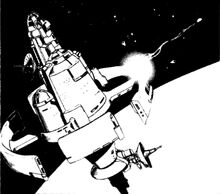
Laco Research Station
Location: Laco, Dixon's Star
Owner: Streel
HS: I Scientific Research StationHP: 50
Mooring Bays: 4 (HS:6 max per bay)
Population: 1000 max
ADF: 0 MR: 0 DCR: 25
Weapons: none
Defenses: none
Computer
Alarm(1), Analysis(6), Bureaucracy(3), Commerce(1), Communication(1), Computer Security(5), Damage Control(1), Industry(6), Information Storage(6), Laboratory(3)x12, Language(6), Life Support(1, capacity:1K), Maintenance(1), Remote Probe(2), Robot Management(4), Transportation(1)
Communication: SubSpace Radio, VideoCom, Intercom network
Detection: Radar, Camera System
Misc. Equipment: 12 laboratories, 40 remote probes
Quarters: 400 single cabins, 200 double cabins, 100 luxury cabins
Vehicles: 6 launches, 8 small launches, 2 workpods
Emergency Vehicles: 40 lifeboats, 200 escape pods
Streel was quick to build a research station over the outpost world of Laco. With their homeworld's discovery of Zebulon and the general isolation Truane's Star contends with, it was a natural move to nab some control of their other neighboring outpost system. While PanGalactic may enjoy an overwhelming presence in the "hub of the Frontier" Streel has this spoke of the wheel that stretches into the Xagyg Dust Nebula all sewn up. Streel also owns & operates the Starport at Point Glass on Laco's surface, so they have a fair say at what comes and goes from this small world.

Red Syn Station
Location: <uncharted system>
Owner: Crimson Syndicate
HS: IV (incomplete) fortified stationHP: 220
Mooring Bays: 12 (HS:18 max)
Population: 2400 maximum
ADF: 0 MR: 0 DCR: 120
Weapons: LB(x2), EB, PB
Defenses: RH, MS(x3), ICM(x8)
Computer
Alarm(4), Analysis(3), Bureaucracy(3), Commerce(4), Communication(4), Computer Lockout(6), Computer Security(6), Damage Control(4), Electron Beam Battery (2), Industry(1), Information Storage(2), Installation Security(6), Interceptor Missile(3), Laser Battery (1) x2, Life Support(4, capacity:3K, two programs), Maintenance(4), Proton Beam Battery(2), Robot Management(6), Transportation(1)
Communication: SubSpace Radio, VideoCom, Intercom network, WNB (deluxe, 4X range)
Detection: Radar (4X range), Energy Sensor(4X range), Skin Sensors, Camera System
Misc. Equipment: Backup Life Support Equipment
Storage: 216 units
Quarters: 1000 single cabins, 500 double cabins, 200 luxury cabins
Vehicles: 16 launches, 12 small launches, 8 workpods
Emergency Vehicles: 80 lifeboats, 400 escape pods
Red Syn Station was once a UPF early warning center that was never finished, constructed around the fourth planet of this eight planet uncharted system. When the Syndicate discoverd this station they immediately got to work on it in order to make it habitable and operational despite its unfinished nature.
Due to the incomplete construction the station is not capable of rotating fast enough to reproduce 1g, however the current 0.6g status has been found acceptable to its inhabitants (particularly the Yazirians who prefer lower grav worlds anyways).
Through this station the Syndicate has managed to assemble an impressive fleet, more than enough to rival any planetary militia. Despite a rarity in the way of actual warships, the sheer numbers alone ranks their fleet with a SpaceFleet division. However, outside their own established system it is rare to see more than two or three of these vessels operating together on a single venture.
Said fleet consists of a light carrier, an escort cruiser that serves as a flagship, a destroyer, a scout carrier, two frigates, four corvettes, four assault scouts, numerous fighter craft, and a compliment of support ships (freighters and such).
